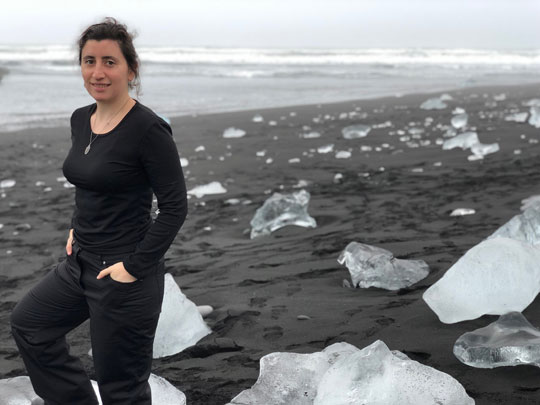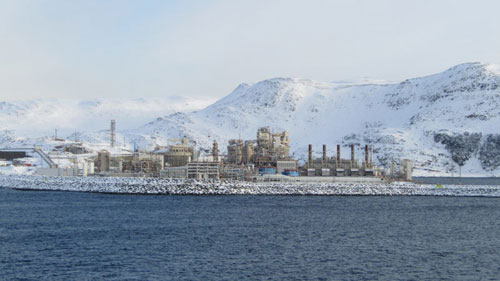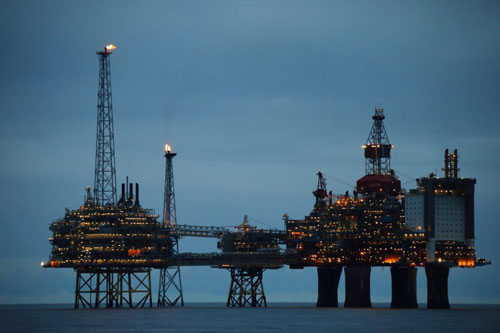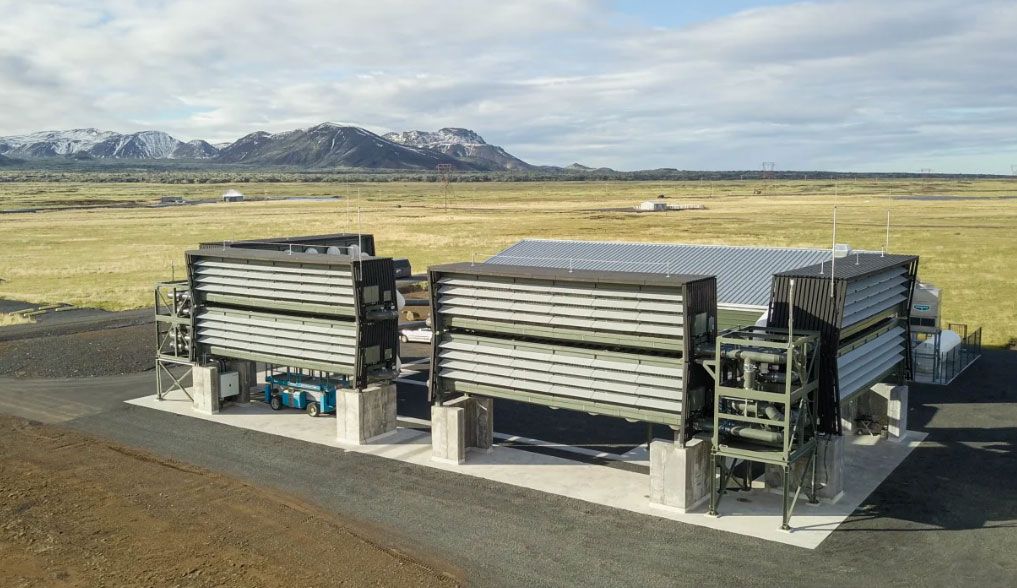Climate Expert Q&A Series
By Nadya Nikiforova
Global carbon emissions are continuing their upward climb. In 2021, global levels topped 37 billion metric tons. Whilst global efforts to decarbonize are beginning to take off in several key sectors – from energy to farming – they are still developing at levels which fall below global reduction targets.
Achieving the commitment to limit global warming to the 1.5°C target set within the Paris Agreement, will requirean increase above the current efforts to reduce emissions. Technologies, which allow carbon to be removed from the atmosphere, open an additional avenue in the journey toward long-term low greenhouse gas emission development strategies. One of these processes – Carbon Capture and Storage (CCS) – is being watched closely by both the private sector and governments. We sat down with IFC’s CCS expert, Ruth Quint Hupart, to learn more about this technology and how it can make a difference in global effort to decarbonize.

IFC’s CCS expert, Ruth
Quint Hupart. Photo: Ruth Quin Hupart.
What is carbon capture and storage? How long has it been around?
Carbon capture and storage, commonly abbreviated as CCS, is a process that consists of capturing the carbon dioxide produced by electric power plants or other industries– for example, steel or cement manufacturing. The CO2 is separated and trapped at the source, then compressed, transported, and stored deep underground. Sometimes the captured CO2 is used for making other products, such as plastics, concrete, or biofuel. This version of the technology is called CCUS, which stands for “Carbon Capture, Utilization and Storage”.
CCS is a proven technology that has been around for almost a hundred years. It was pioneered in the 1930s, when the natural gas industry began extracting CO2 from natural gas to enhance its purity. In 1972, oil companies began experimenting with compressing captured CO2, transporting it to oil fields, and injecting it into underground oil deposits to increase their oil recovery levels.
Why is this technology important for addressing climate change?
Scientists agree that without carbon capture, the world will most likely fail to meet the goals of the Paris Agreement. Capturing carbon emissions before they enter the atmosphere is especially vital for greening hard-to-abate sectors, where energy efficiency and switching to renewables won’t be enough. For example, consider the production of cement, where the underlying chemical processes emit CO2 regardless of fuel sources. At its core, CCS is another tool that can help us limit global warming by removing pollution at its source and even from the air itself.
How widely is it used?
As of 2022, there were 30 commercial-scale operational CCS plants and over 160 additional facilities under construction or in the development pipeline – i.e., more than 190 large CCS projects around the world, and the numbers are growing. The majority of these are in North America and the EU, but Latin America, Asia-Pacific and the Middle East are also entering the market.

A direct air carbon capture installation at the Hellisheiði Geothermal Power Plant in Iceland. Photo: Leonora Enking.
What makes a CCS project successful?
As with any technology, progress depends on public incentives and deterrents. For instance, CCUS took off in the US due to recent measures that nearly doubled the tax credit amount companies receive for every ton of captured and utilized CO2.
On the deterrent side of the equation, Norway’s 1991 decision to start taxing CO2 emissions generated by the offshore oil and gas activities led to the development of the first commercial offshore CCS project in the North Sea. Over 20 countries have explicitly included CCUS as part of their plans to fulfill their Paris Agreement obligations.
The sector and size of the asset, as well as purity of the CO2 emission stream matter a great deal for an average CCS project. For instance, the fertilizer industry and chemical manufacturing produce highly pure emissions. The technology can be either retrofitted onto existing plants or built anew. That’s the easy part. The hard part is putting in place a business model that can generate revenue with the captured CO2. Early movers are more likely to find off-takers in the utilization market, but even for them, success is not guaranteed.
Many recently announced large scale projects result from partnerships between governments, energy giants, and hard-to-abate sectors. Increasingly, we are seeing development of CCS hubs and clusters. In this model, you can achieve economies of scale in transporting and storing CO2 captured from multiple, collocated sites. Whether or not the process is economically attractive also depends on the price of carbon and government incentives in any given host country.
How can CCS be deployed in emerging markets?
One of the barriers to deploying the CCS technology more widely in emerging markets, where IFC operates, is the lack of government support. Another challenge is the lack of data regarding the most promising geological storage locations. However, on the bright side, we believe that many emerging economies have high potential for capturing and storing CO2. In fact, it’s a win-win: Not only will this further the fight against climate change, but it can be another resource for these countries to monetize.

The world’s first CCS facility to store captured CO2 in a deep saline reservoir 800m(3) beneath the sea bed. Photo: Temujin Doran/CNN.
What is IFC doing in this space?
IFC is working ahead of the project cycle to create markets for CCUS in the countries where we operate and is building capacity among clients on the potential to decarbonize their operations using CCUS.
Our two active CCS advisory projects are in Nigeria and Timor-Leste. In Nigeria, we are mapping emissions sources and geological storage locations identify potential hubs. The project has a special focus on industrial applications, and is also looking at legal and regulatory requirements for the industry to take off. In Timor-Leste, IFC is helping the government develop a legal and regulatory framework that could help develop a geological site situated in the Timor Sea.
What would it take to help CCS take off and move to scale in emerging markets?
We need to gather more data, and we need to do it quickly! First, we need to map out where CO2 can be stored. Second, we must build domestic capacity and technical know-how. And third, we need better legal and regulatory environments for everything from monitoring storage wells to permitting pipelines that transport the captured CO2 to locations where it can be stored or utilized. This technology can be a real game changer that allows developing countries to follow a low carbon development pathway even as they continue to industrialize.
